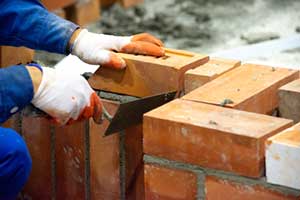Trustworthy Chimney Services: Maintenance and Fix Done Right
Trustworthy Chimney Services: Maintenance and Fix Done Right
Blog Article
Opening the Keys of Sustainable Masonry Construction Practices for Eco-Friendly Buildings
In the world of modern-day construction, the pursuit of lasting techniques has actually ended up being vital. Amongst the myriad techniques to environment-friendly building, lasting masonry construction stands out as a reliable and long lasting method that holds a wide range of untapped capacity. From the choice of products to ingenious construction strategies, the secrets to attaining sustainability within masonry construction are complex and appealing. By exploring the advantages, materials, techniques, and future fads of sustainable masonry, a deeper understanding of just how these practices can shape the future of green buildings emerges.
Advantages of Sustainable Masonry Construction
Accepting lasting stonework building and construction techniques not just lowers environmental impact but also offers lasting financial benefits to home builders and areas. By making use of products like recycled bricks, blocks, and rocks, building contractors can significantly decrease the carbon impact of their tasks while advertising source performance. Furthermore, sustainable masonry construction strategies, such as proper insulation and thermal mass residential or commercial properties, can boost energy efficiency within structures, leading to lowered operational prices in time.
In addition, the toughness and resilience of stonework structures add to long-term financial benefits. Buildings created utilizing lasting masonry techniques commonly require much less maintenance and fixing, equating to set you back savings for builders and homeowner. The durability of masonry products likewise guarantees that structures continue to be steady and safe, decreasing the requirement for frequent restorations or substitutes.
Eco-Friendly Masonry Materials
Making use of eco-friendly masonry materials is a critical step towards improving the sustainability of building and construction techniques and decreasing ecological influence while making the most of lasting economic benefits. Sustainable masonry materials are sourced, created, and used in a way that lowers total ecological influence. Lasting concrete obstructs integrate recycled aggregates and might feature improved insulation properties, contributing to energy performance in structures.
Moreover, natural products like adobe, rammed earth, and straw bundles provide superb thermal mass residential properties, minimizing the demand for home heating and cooling power. These materials are commonly in your area available, promoting regional economic climates and decreasing transportation-related carbon exhausts. By choosing environment-friendly masonry products, building and construction projects can substantially lower their environmental impact and add to the development of much healthier, much more lasting built environments.
Energy-Efficient Masonry Strategies
Power performance plays a vital role in boosting the sustainability of stonework building and construction methods. One essential energy-efficient masonry method is the use of thermal mass, which involves integrating thick materials like concrete or brick into the structure's framework to absorb and store heat.

Advancements in Lasting Stonework
Recent improvements in lasting stonework methods have produced ingenious methods linked here that are improving the building and construction industry. One such technology is the growth of self-healing concrete, which makes use of germs installed within the concrete to heal cracks autonomously. This development not just decreases maintenance costs however also boosts the resilience of stonework frameworks, adding to their sustainability.
Another significant innovation is making use of recycled accumulations in masonry building - masonry contractor. By including materials such as crushed ceramic waste or recycled glass right into concrete blends, builders can decrease the ecological impact of building tasks while maintaining architectural honesty. This method not just diverts waste from garbage dumps but also preserves natural resources, making it a vital advancement in sustainable stonework building
Moreover, the combination of electronic design devices, such as Building Information Modeling (BIM), is revolutionizing the means stonework frameworks are planned and created. BIM permits more accurate computations, lowered material waste, and boosted power performance, inevitably leading to even more sustainable building methods. These technologies jointly signify an encouraging future for sustainable masonry construction in the period of environmentally friendly structures.
Future Trends in Masonry Sustainability
With the cutting-edge strides made in sustainable masonry methods, the future trends in masonry sustainability are poised to more revolutionize the building industry. Among the key patterns forming the future of masonry sustainability is the increased assimilation of modern technology. Developments such as Structure Information Modeling (BIM) and virtual reality simulations are being used to optimize masonry building and construction procedures, bring about lowered product waste and boosted power performance in buildings.
In addition, the advancement of novel lasting materials is set to play a significant function in boosting the eco-friendliness of stonework building and construction. masonry contractor. Developments like self-healing concrete, recycled accumulations, and bio-based binders are Learn More getting traction landscape curbing stamps for their ability to minimize environmental impact while preserving structural stability

Conclusion
Finally, sustainable masonry building and construction techniques offer countless advantages for environmentally friendly buildings. By using eco-friendly products and energy-efficient methods, masonry can add to a more sustainable constructed setting. Developments in sustainable masonry are continually being developed to further enhance the ecological performance of buildings. Looking towards the future, the trend of masonry sustainability is expected to expand, causing more environmentally friendly and energy-efficient construction practices in the years ahead.
Report this page